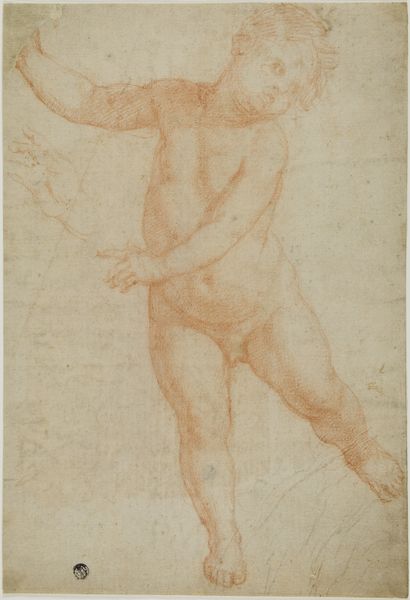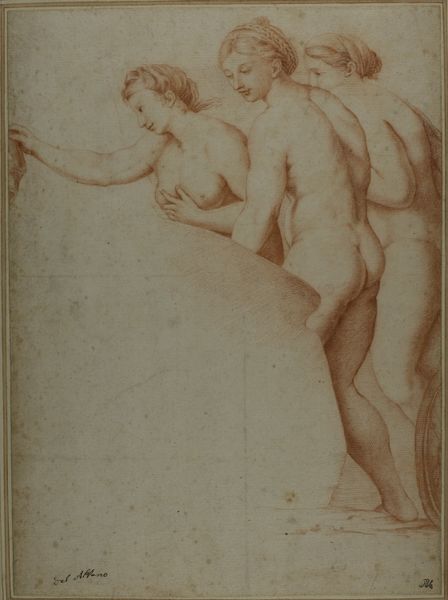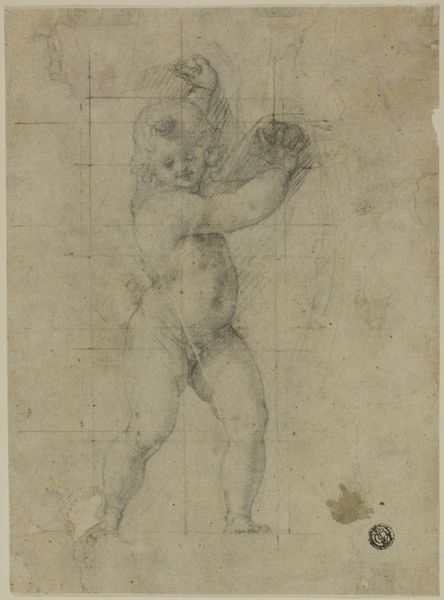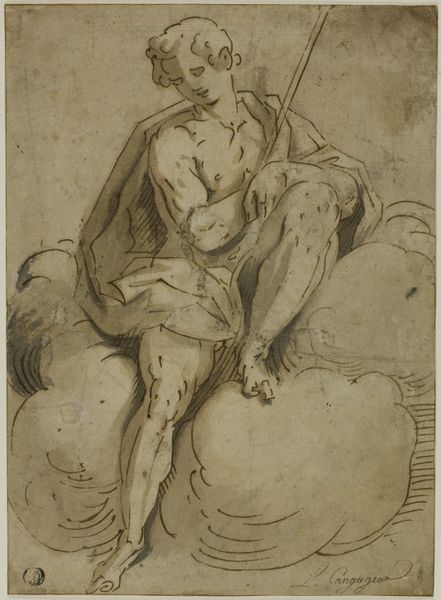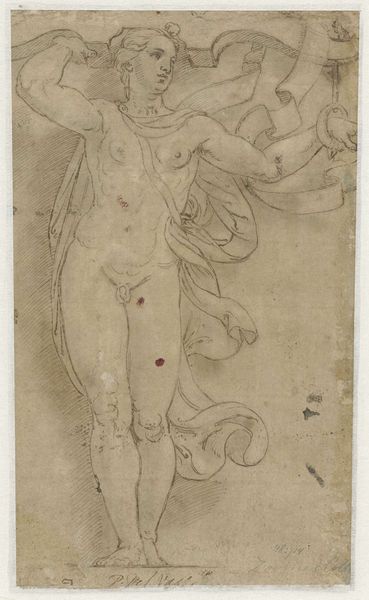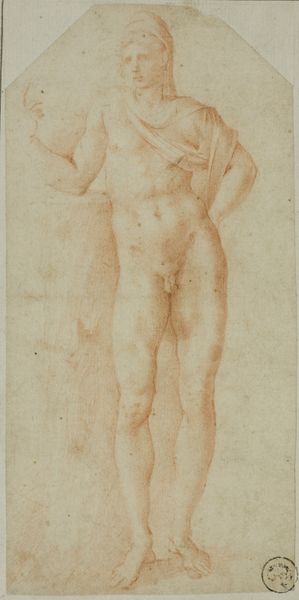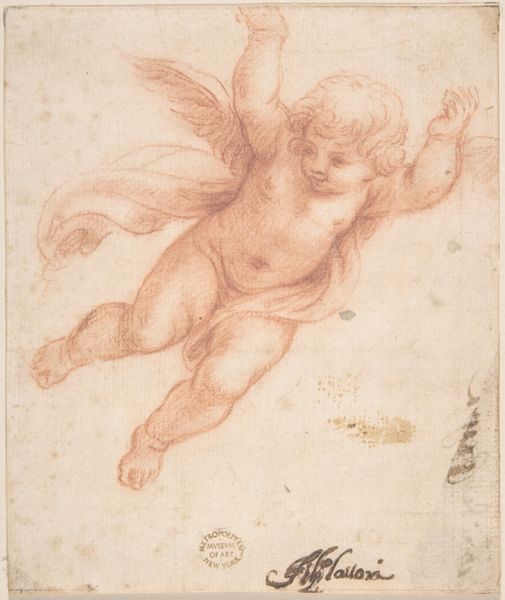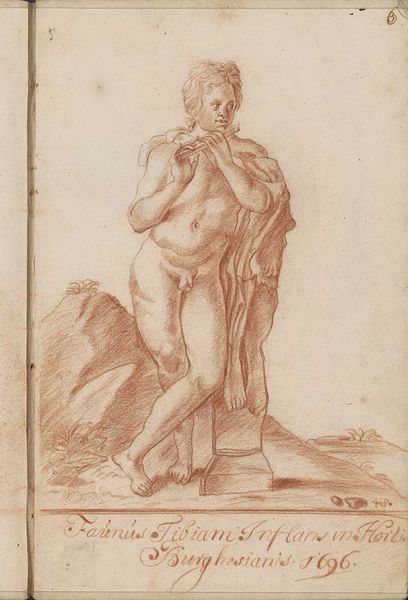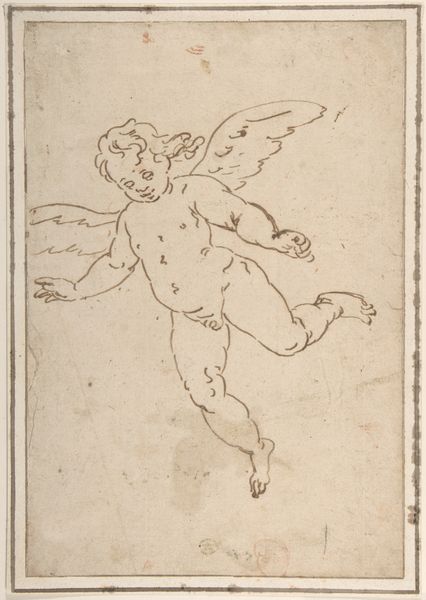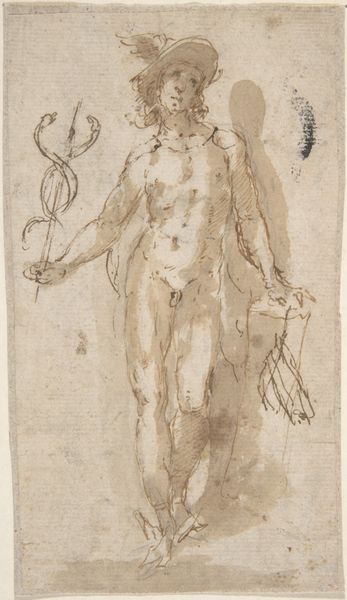
drawing, print, paper, ink, pencil, chalk, pen, black-chalk
#
drawing
#
allegory
# print
#
pencil sketch
#
charcoal drawing
#
figuration
#
paper
#
11_renaissance
#
ink
#
coloured pencil
#
pencil
#
chalk
#
pen
#
nude
#
black-chalk
Dimensions: 138 × 99 mm
Copyright: Public Domain
Editor: So, here we have "Cupid Tied to a Tree," created between 1570 and 1599 by Giorgio Picchi. It’s a drawing made with pen, ink, chalk, and pencil on paper, and it's currently residing at The Art Institute of Chicago. The Cupid figure almost appears like a sculptural maquette rendered in delicate lines, it’s quite intriguing. What stands out to you the most? Curator: I'm struck by the overt display of labor in this piece. Look closely. The materiality of chalk, pen, and ink, deliberately laid on the paper. Notice also that each element declares its presence; the process of creation becomes paramount, doesn’t it? This challenges typical notions of Renaissance drawings as solely preparatory for a finished artwork, wouldn’t you agree? Editor: Yes, it’s almost as if the labor is the point. Do you think the relatively "rough" look challenges established hierarchies, elevating drawing beyond mere preparatory work? Curator: Exactly! Think about the materials available to Picchi – where did the chalk and ink come from? Who processed these raw materials, and what was their social status? Further, consider the patronage system that commissioned and consumed such works, transforming the "erotic" cupid into a coveted commodity. How does that inform your view? Editor: It does shift my perspective! Seeing it as part of a wider production chain gives me so much more to consider. I focused on the individual image at first. Curator: Precisely! The drawing represents not only Picchi’s hand, but the convergence of resources, labor, and societal structures which gave form to this Cupid. Editor: It's fascinating to consider artmaking as an integrated activity, bound to a whole system of making and selling. It gives the artwork a much larger context and social life than I originally considered. Curator: Agreed! Recognizing these interconnections lets us read this Cupid not only as symbol, but as product of a complex world of things, labour, and desire.
Comments
No comments
Be the first to comment and join the conversation on the ultimate creative platform.

